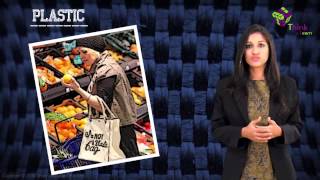What are Plastics?
Plastics is the term commonly used to describe a wide range of synthetic or semi-synthetic materials that are used in a huge and growing range of applications.
Table of Contents
- Introduction To Plastics
- Recommended Videos
- Advantages of Plastics
- Disadvantages of Plastics
- Frequently Asked Questions – FAQs
Introduction To Plastics
Plastic has become an inseparable and integral part of our lives. The amount of plastics consumed annually has been growing steadily. Its low density, strength, user-friendly designs, fabrication capabilities, long life, low weight and low cost are the factors behind such phenomenal growth.
Plastic waste is very visible as it contributes to a large volume of the total solid wastes. Precisely because of their large visibility plastic wastes have been viewed as a serious solid waste problem.
Recommended Videos

Advantages of Plastics
The growth in the use of plastic is due to its beneficial properties which include:
- Extreme versatility and ability to be tailored to meet specific technical needs.
- Lighter weight than competing materials reduces fuel consumption during transportation.
- Good safety and hygiene properties for food packaging.
- Durability and longevity
- Resistance to chemicals, water and impact.
- Excellent thermal and electrical insulation properties
- Comparatively lesser production cost
- Unique ability to combine with other materials like aluminium foil, paper, adhesives
- Far superior aesthetic appeal.
- The material of choice – Human lifestyle and plastic inseparable.
- Intelligent features, smart materials and smart systems.
Disadvantages of Plastics
Plastics production also involved the use of potentially harmful chemicals which are added as stabilizers or colourants. Many of these have not undergone environmental risk assessment and their impact on human health and the environment is currently uncertain.
Such an example is phthalates which are used in the manufacture of PVC. PVC has in the past been used in toys for young children and there have been concerns that phthalates may be released when these toys are sucked. Risk assessment of the effects of phthalates on the environment is currently being carried out. The disposal of plastics products also contributes significantly to their environmental impact.
Most plastics are non-degradable and they may take a long time to break down once they are landfilled. With more and more plastic products, particularly plastics packaging, being disposed of soon after their purchase, the landfill space required by plastics waster is a growing concern.
Frequently Asked Questions – FAQs
What are the advantages and disadvantages of using plastic?
The benefits of plastics: the production criteria are durable, low cost, water-resistant, lower energy and heavy chemicals and are lightweight. Disadvantages of using plastics are, they pollute our environment. They pose a danger to wildlife.
What are the advantages of plastic?
The properties of plastic are resistant to rust and chemically inert. They have low coefficient of thermal expansion and have strong thermal and electric insulating properties. Plastic benefits are very good water-resistant and have good adhesivity. Plastic production is solid, good and cheap.
What are the negative effects of plastic?
Toxic chemicals leach out of plastic and are present virtually in everybody’s blood and tissue. Exposure to them is related to tumors, birth defects, compromised immunity, disturbance of the endocrine system and other disorders.
What are the main problems with plastic?
Plastics serve like a sponge, soaking up many ocean-borne toxic chemicals and pollutants. We release these into the atmosphere when we break down, as well as the chemicals used to give them their properties, such as colour, which in effect can be highly toxic.
How plastic is harmful to humans?
Human bodies absorb chemicals which are applied to plastics. Any of these substances have been found to modify hormones or other possible effects on human health. Wildlife may be harmed or killed by plastic waste, contaminated with chemicals and sometimes eaten by marine animals.
How does plastic benefit the economy?
Plastic has many direct economic advantages and can contribute to resource efficiency. Through rising shelf life, it decreases food waste, and its relatively low weight decreases fuel consumption for goods transport. Estimates show that by 2050 the ocean would have more plastic, by weight, than fish.
What is the impact of plastic?
Plastic contamination causes harmful contaminants that cause damage to humans, animals and plants. This can take hundreds or even thousands of years for plastic to break down, so the long-lasting environmental damage. It affects all food chain organisms from tiny species such as plankton through to whales.
Is plastic harmful?
Toxic chemicals leach out of plastic and can be contained in almost everybody’s blood and tissue. Exposure to them is related to cancer, birth defects, compromised immunity, disturbance of the endocrine and other disorders.

BYJU’S is best learning at home